Abstract
Factors influencing the survival of chlamydiae after freezing were reexamined. From the data presented, it is suggested that preservation of laboratory-grown chlamydiae is best achieved through the use of sucrose as the cryoprotective agent, in the presence of 10% serum. Dimethyl sulfoxide and glycerol are more toxic. The period of exposure to sucrose before freezing must be kept as short as possible and be at 4 degrees C rather than at room temperature. The rate of cooling during freezing in sucrose is not important; however, cooling at a rate slower than 1 degrees C/min should be avoided. Since chlamydial survival is increased by rapid thawing, the volume of the sample should be kept to a minimum. Thawed suspensions should be inoculated onto cell monolayers without delay. The application of these methods may increase the proportion of stored clinical specimens in which chlamydiae can be found.
Full text
PDF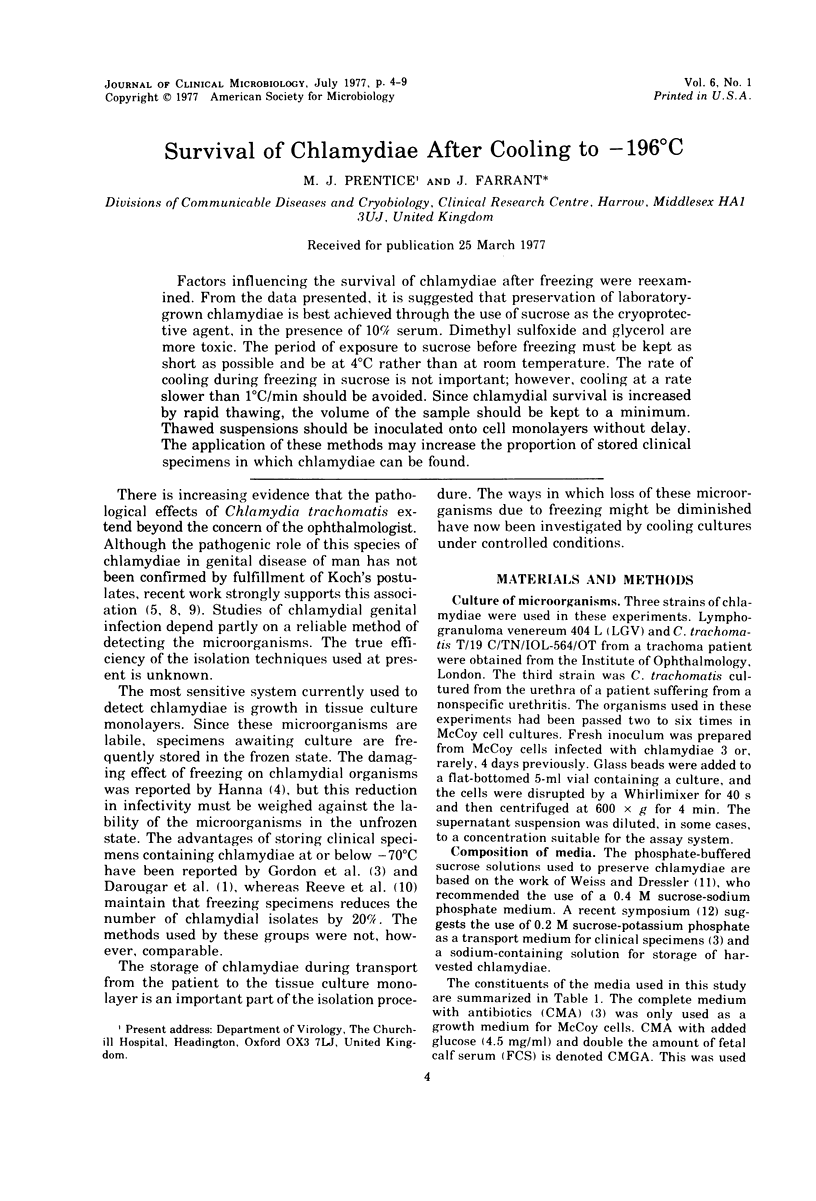
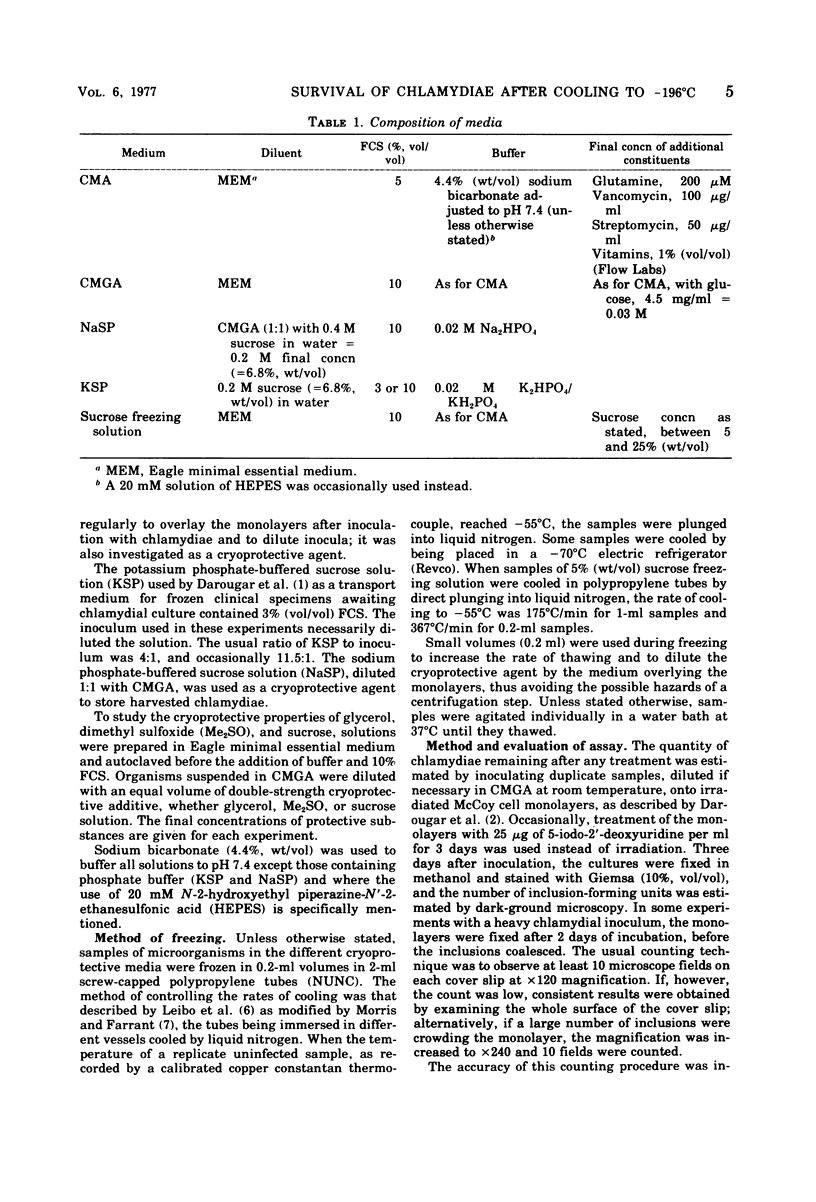
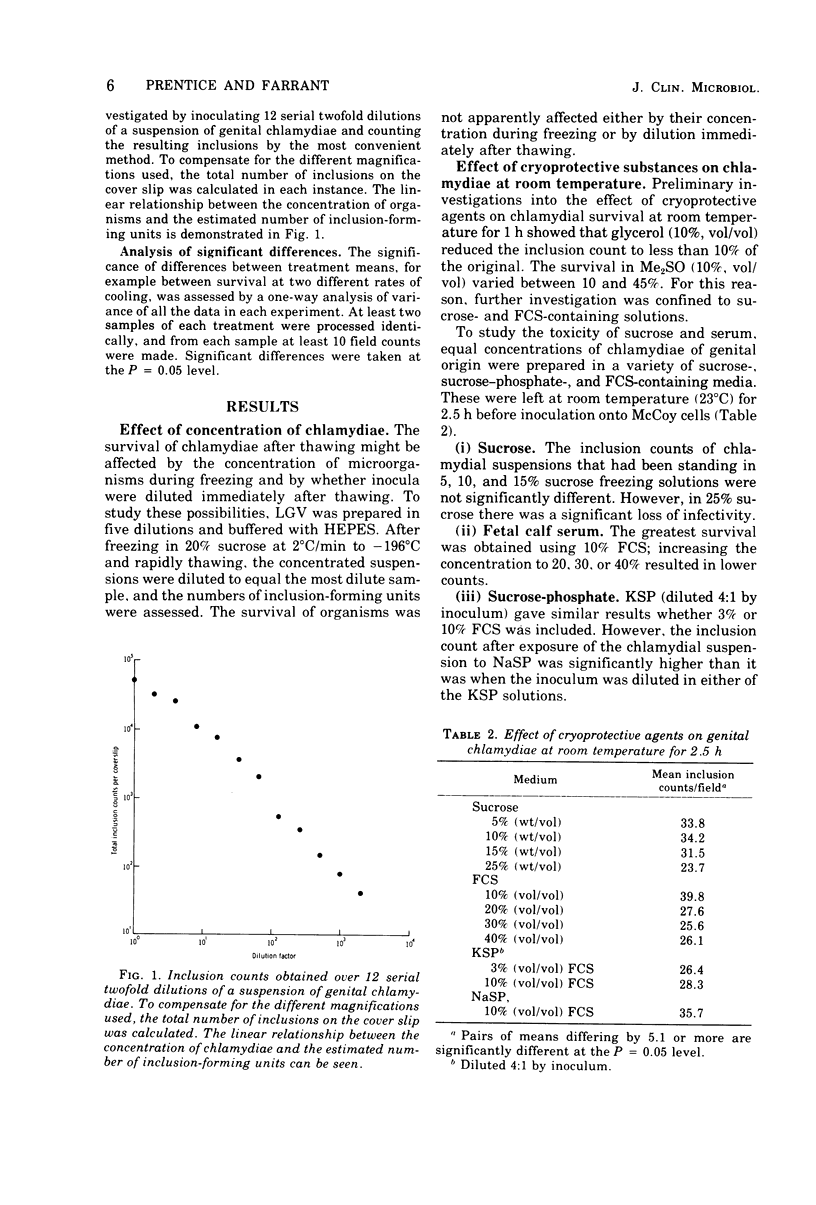
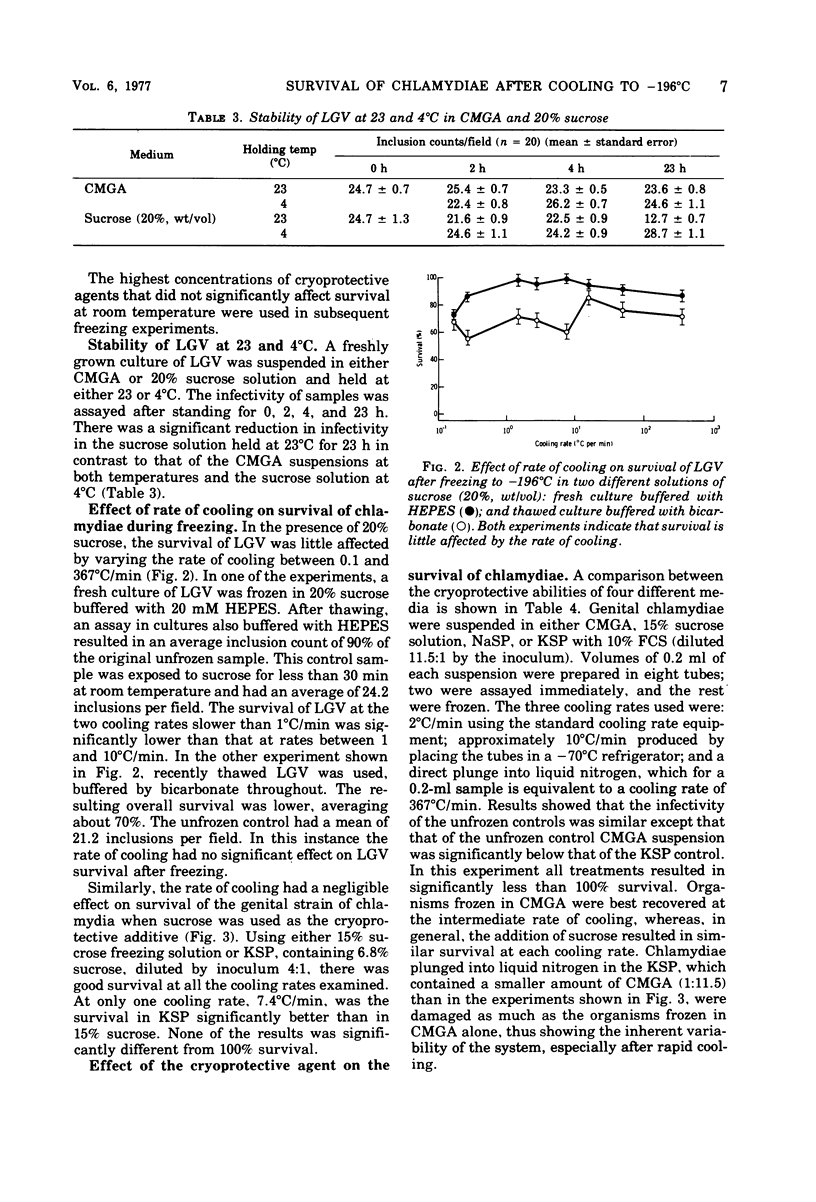
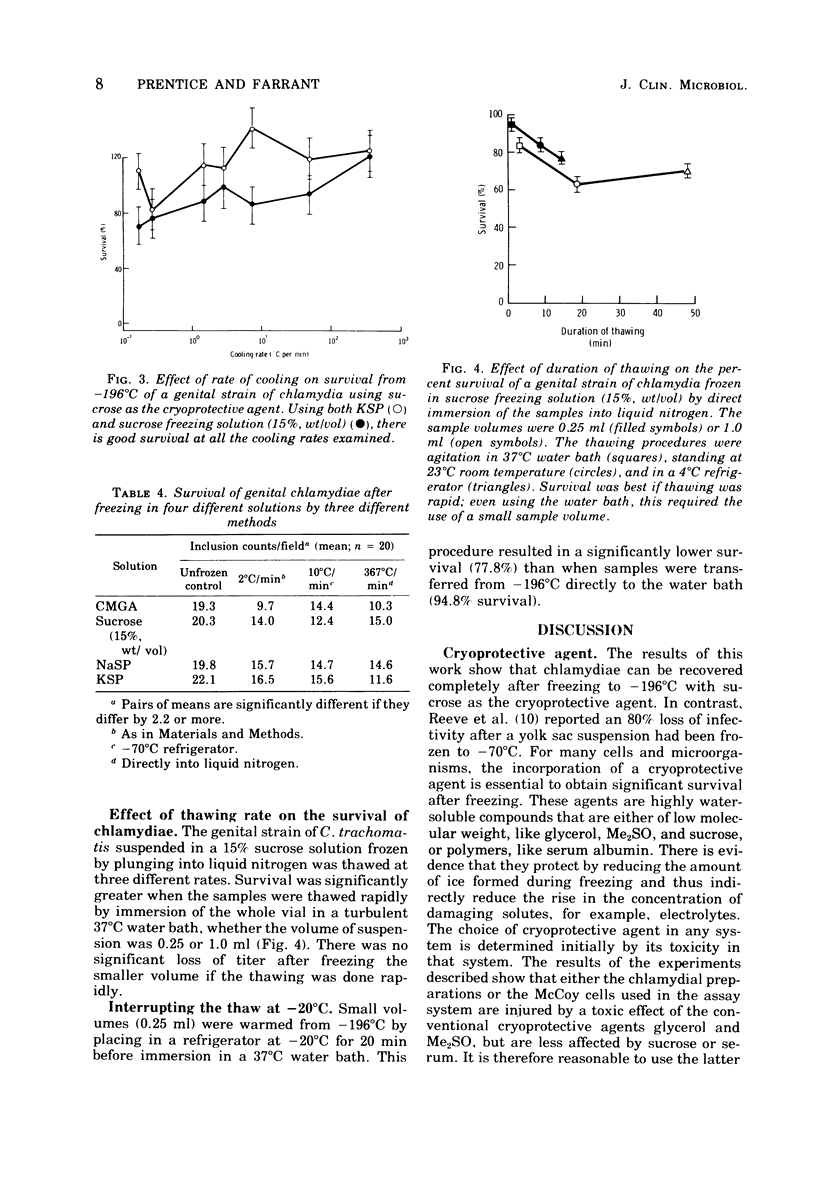
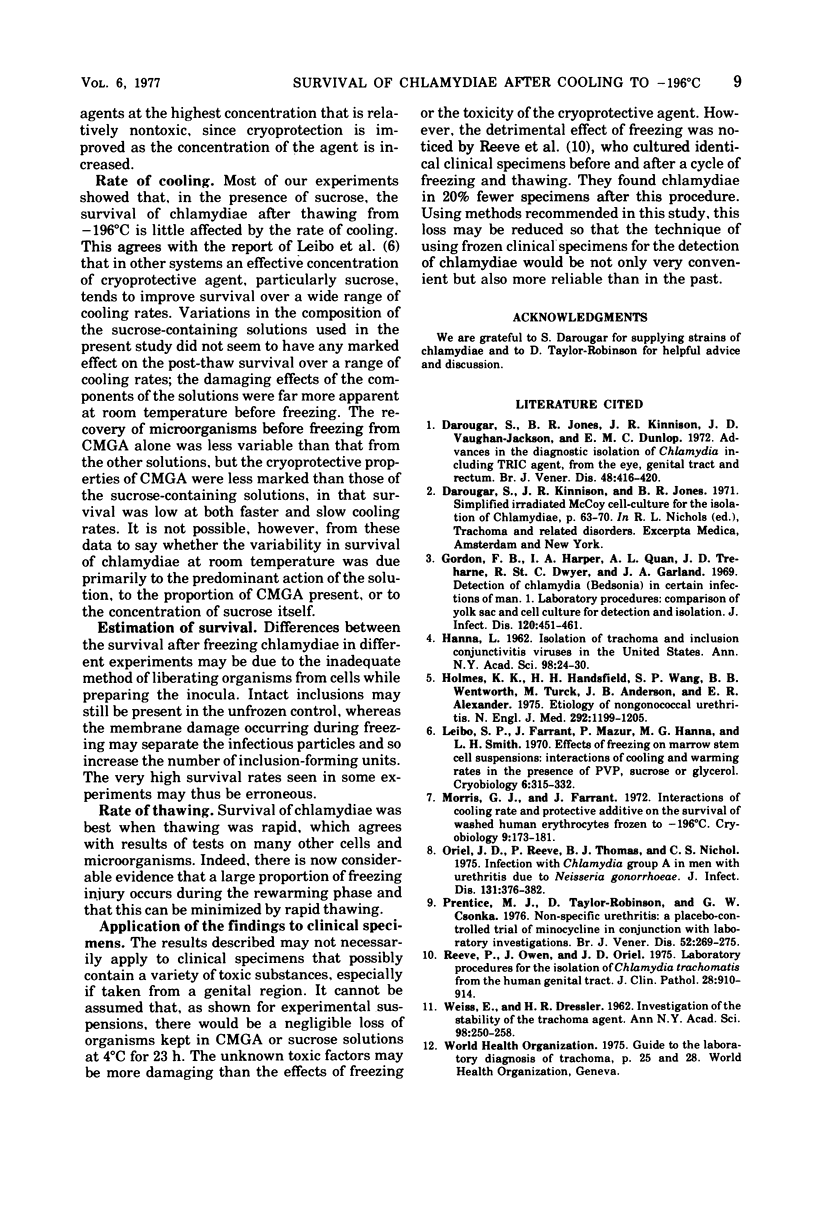
Selected References
These references are in PubMed. This may not be the complete list of references from this article.
- Darougar S., Jones B. R., Kinnison J. R., Vaughan-Jackson J. D., Dunlop E. M. Chlamydial infection. Advances in the diagnostic isolation of Chlamydia, including TRIC agent, from the eye, genital tract, and rectum. Br J Vener Dis. 1972 Dec;48(6):416–420. doi: 10.1136/sti.48.6.416. [DOI] [PMC free article] [PubMed] [Google Scholar]
- Gordon F. B., Harper I. A., Quan A. L., Treharne J. D., Dwyer R. S., Garland J. A. Detection of Chlamydia (Bedsonia) in certain infections of man. I. Laboratory procedures: comparison of yolk sac and cell culture for detection and isolation. J Infect Dis. 1969 Oct;120(4):451–462. doi: 10.1093/infdis/120.4.451. [DOI] [PubMed] [Google Scholar]
- HANNA L. Isolation of trachoma and inclusion conjunctivitis viruses in the United States. Ann N Y Acad Sci. 1962 Mar 5;98:24–30. doi: 10.1111/j.1749-6632.1962.tb30527.x. [DOI] [PubMed] [Google Scholar]
- Holmes K. K., Handsfield H. H., Wang S. P., Wentworth B. B., Turck M., Anderson J. B., Alexander E. R. Etiology of nongonococcal urethritis. N Engl J Med. 1975 Jun 5;292(23):1199–1205. doi: 10.1056/NEJM197506052922301. [DOI] [PubMed] [Google Scholar]
- Leibo S. P., Farrant J., Mazur P., Hanna M. G., Jr, Smith L. H. Effects of freezing on marrow stem cell suspensions: interactions of cooling and warming rates in the presence of PVP, sucrose, or glycerol. Cryobiology. 1970 Jan-Feb;6(4):315–332. doi: 10.1016/s0011-2240(70)80086-4. [DOI] [PubMed] [Google Scholar]
- Morris G. J., Farrant J. Interactions of cooling rate and protective additive on the survival of washed human erythrocytes frozen to -196 degrees C. Cryobiology. 1972 Jun;9(3):173–181. doi: 10.1016/0011-2240(72)90029-6. [DOI] [PubMed] [Google Scholar]
- Oriel J. D., Reeve P., Thomas B. J., Nicol C. S. Infection with Chlamydia group A in men with urethritis due to Neisseria gonorrhoeae. J Infect Dis. 1975 Apr;131(4):376–382. doi: 10.1093/infdis/131.4.376. [DOI] [PubMed] [Google Scholar]
- Prentice M. J., Taylor-Robinson D., Csonka G. W. Non-specific urethritis. A placebo-controlled trial of minocycline in conjunction with laboratory investigations. Br J Vener Dis. 1976 Aug;52(4):269–275. doi: 10.1136/sti.52.4.269. [DOI] [PMC free article] [PubMed] [Google Scholar]
- Reeve P., Owen J., Oriel J. D. Laboratory procedures for the isolation of chlamydia trachomatis from the human genital tract. J Clin Pathol. 1975 Nov;28(11):910–914. doi: 10.1136/jcp.28.11.910. [DOI] [PMC free article] [PubMed] [Google Scholar]
- WEISS E., DRESSLER H. R. Investigation of the stability of the trachoma agent. Ann N Y Acad Sci. 1962 Mar 5;98:250–260. doi: 10.1111/j.1749-6632.1962.tb30549.x. [DOI] [PubMed] [Google Scholar]


